A light ray moving in medium-I (of refractive index ) is incident on interface of two media and it is totally internally reflected at the interface. Now, refractive index of medium-II is decreased, then
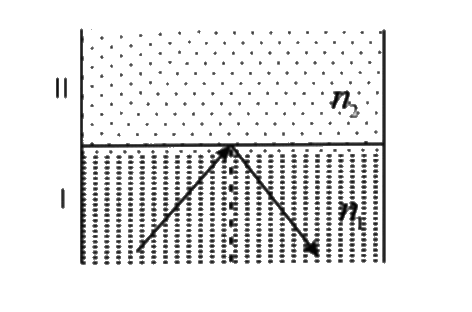
ray will move completely parallel to the interface
ray will be still totally internally reflected at interface
ray will be totally transmitted into medium-II only, if angle of incidence is increased
ray will be totally transmitted in medium-II
The correct Answer is:B
Step by step video & image solution for A light ray moving in medium-I (of refractive index n_(1)) is incident on interface of two media and it is totally internally reflected at the interface. Now, refractive index n_(2) of medium-II is decreased, then by Physics experts to help you in doubts & scoring excellent marks in Class 12 exams.
Updated on:21/07/2023Similar Questions
A ray of light, travelling in a medium of refractive index 'mu_, is incident at an angle i on a composite transparent plate consisting of three plates of refractive indices μ1,μ2andμ3. The ray emerges from the composite plate into a medium of refractive index μ4, at angle x. Then,
View SolutionIn the diagram shown, light is incident on the interface between media 1 (refractive index n1) and 2 (refractive index n2) at angle slightly greater than the critical angle, and is totally reflected. The light is then also totally reflected at the interface between media 1 and 3 (refractive index n3), after which it travels in a direction opposite to its initial direction, The media must have a refractive indices such that.
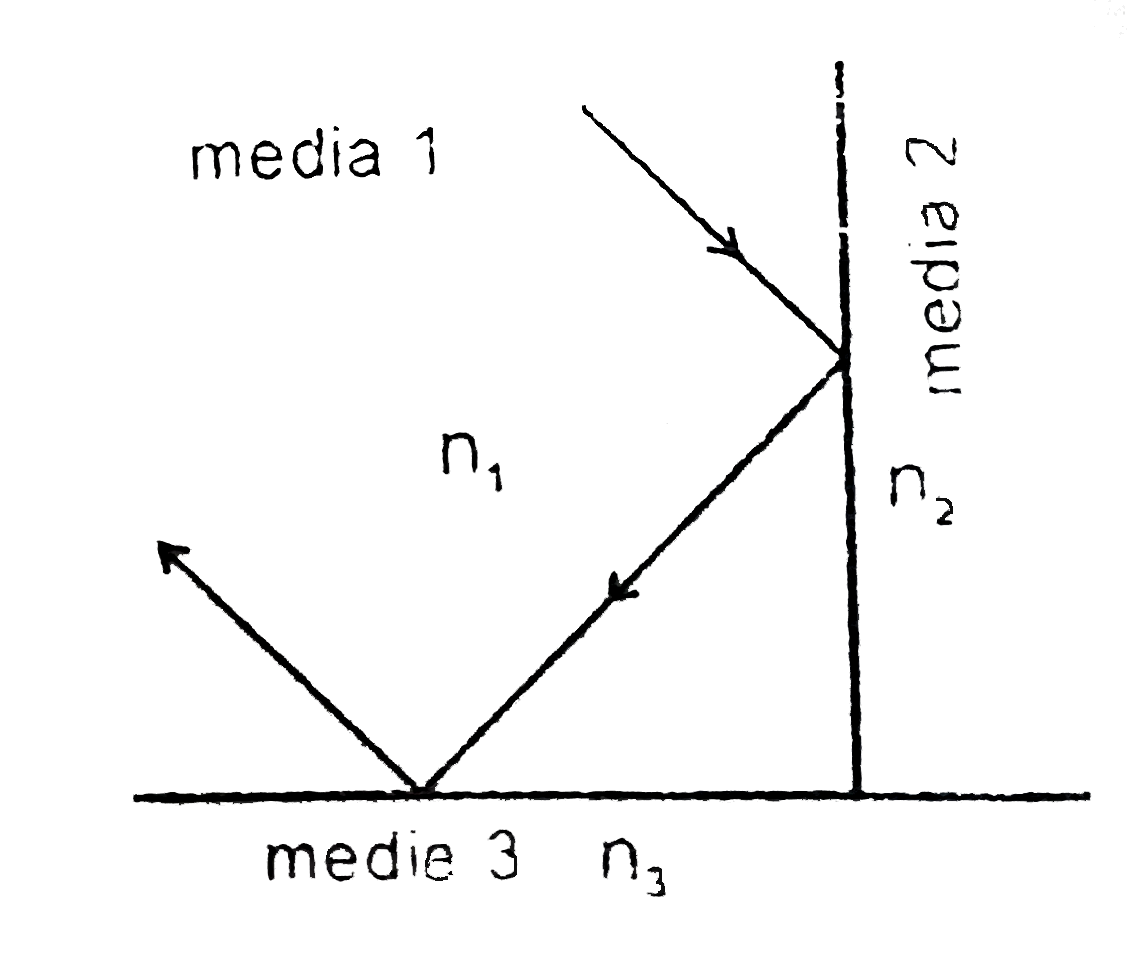 .
.
View SolutionA light ray is incident perpendicularly to one face of a 90∘ prism and is totally internally reflected at the glass-air interface. If the angle of reflection is 45∘, we conclude that the refractive index n
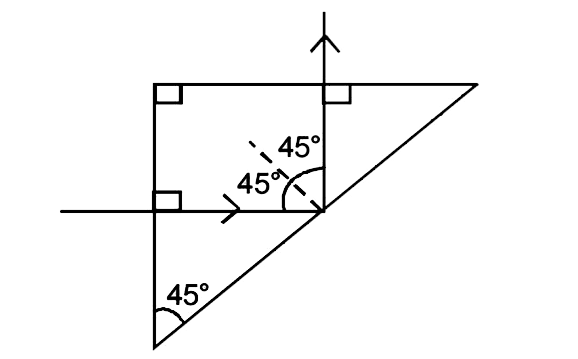
View SolutionFor total internal reflection to take place, the angle of incidence i and the refractive index μ of the medium must satisfy the inequality
View SolutionUnder what conditions is the phenomenon of total internal reflection between the critical angle of incidence and the refractive index of the medium.
View SolutionLight guidance in an optical fibre can be understood by considering a structure comprising of thin solid glass cylinder of refractive index n1 surrounded by a medium of lower refractive index n2. The light guidance in the structure takes place due to successive total internal reflectrions at the interface of the media n1 and n2 as shown in the fugure. All rays with the angle of incidence i less than a particular value im are confined in the medium of refractive index n1. The numerical aprture (NA) of the structure is defined as sinim
For two structure namely S1 with n1=√454 and n2=32, and S2 with n1=85 and n2=75 and taking the refractive index of water to be 43 and that of air to be 1, the correct option (s) is (are) ?
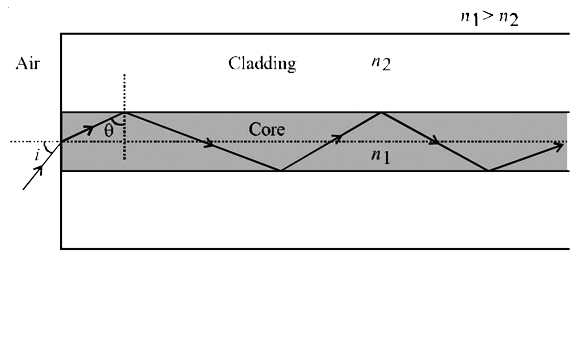
View SolutionA cubical block of glass of refractive index n1 is in contact with the surface of water of refractive index n2. A beam of light is incident on vertical face of the block. After refraction a total internal reflection at the base and refraction at the opposite face take place. The ray emerges at angle θ as shown. The value of θ is given by
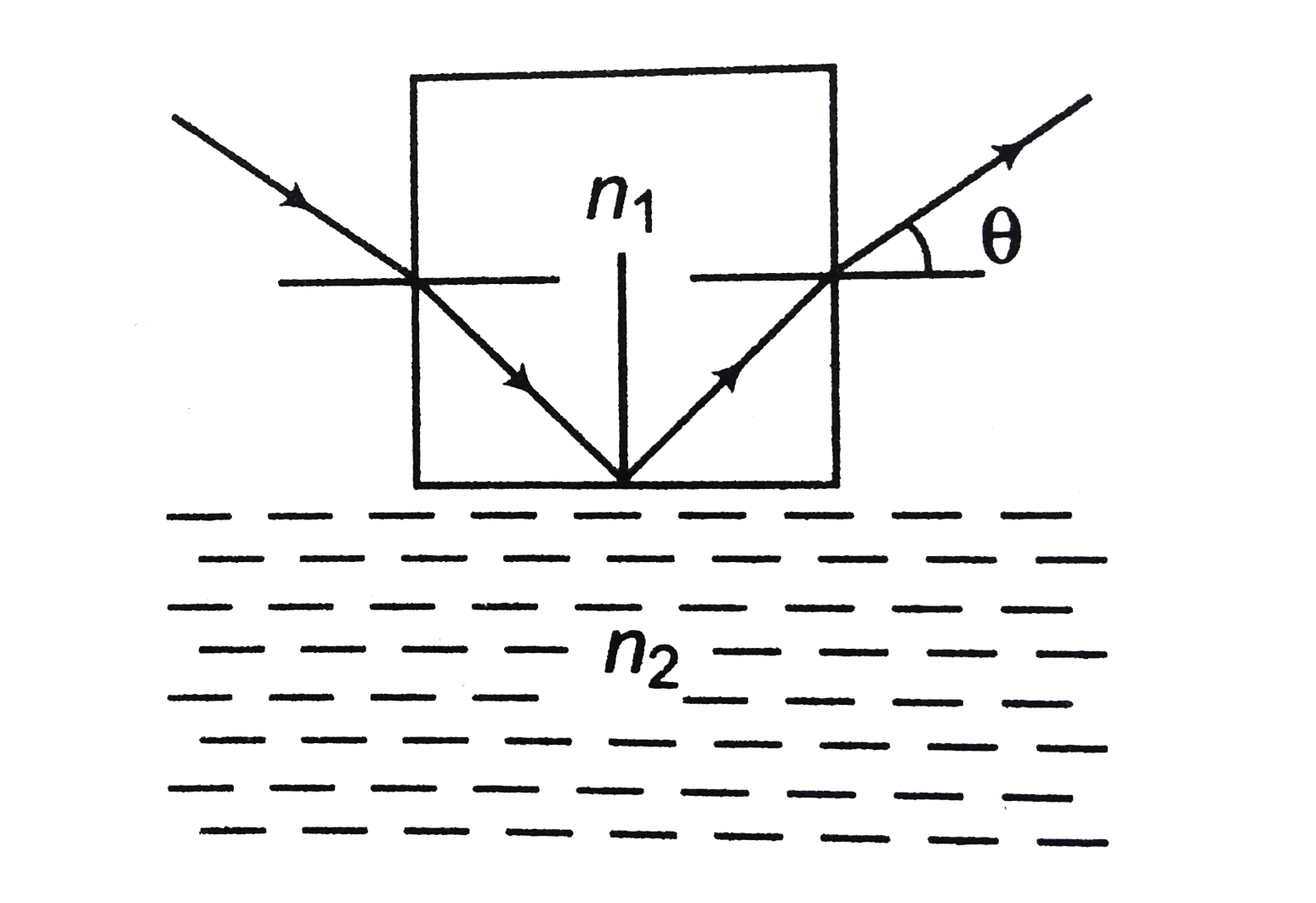
View SolutionThe angle of incidence at which reflected light is totally polarized for reflection from air to glass (refractive index n),
View SolutionThe angle of incidence at which reflected light is totally polarised for reflection from air to glass (refractive index n) is
View SolutionLight guidance in an optical fibre can be understood by considering a structure comprising of thin solid glass cylinder of refractive index n1 surrounded by a medium of lower refractive index n2. The light guidance in the structure takes place due to successive total internal reflectrions at the interface of the media n1 and n2 as shown in the fugure. All rays with the angle of incidence i less than a particular value im are confined in the medium of refractive index n1. The numerical aprture (NA) of the structure is defined as sinim
If two structure of same cross-sectional area, but different numerical apertures NA1and NA2(NA2<NA1) are joined longitudinally, the numerical aperture of the combined structure is
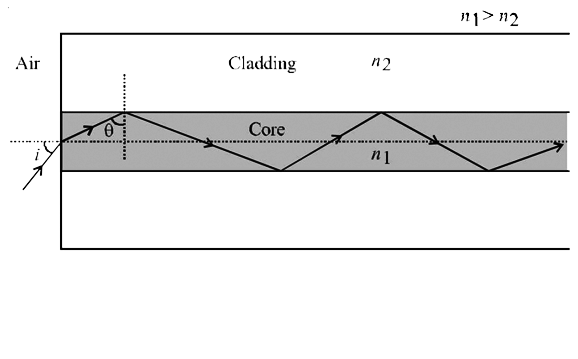
View Solution